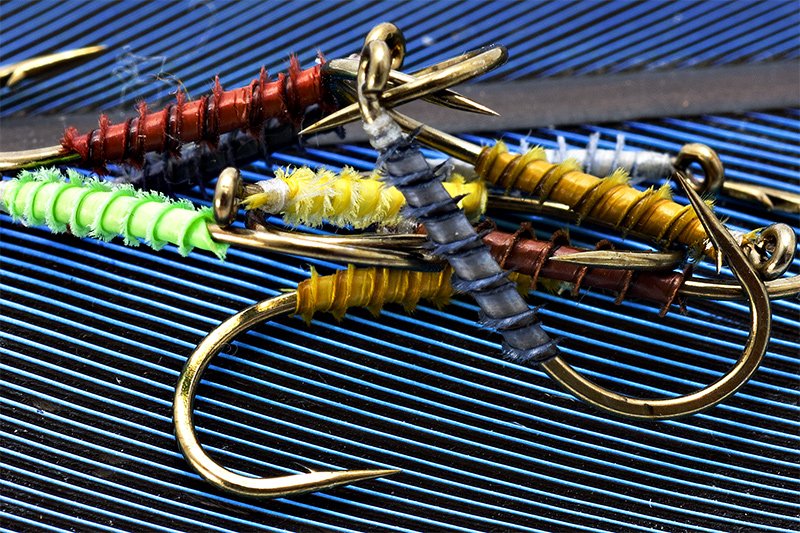
This article ” Tying flies herls with biots” is about how to use and how to tie in the proper way with these materials. As you know, in tying world a lot of interesting materials are used. Feathers are in top 3 list but even so, they are mostly used for making wings and hackles.
Feathers and feather parts used for making bodies are so popular Biots and herls are not widely used and and appreciated like should be.
In fact with good quality biots and herls you can make beautiful bodies like those bellow:
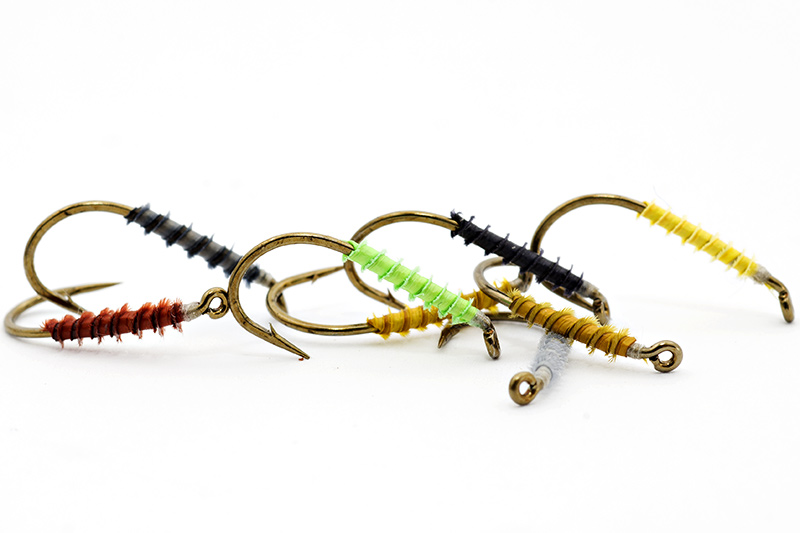
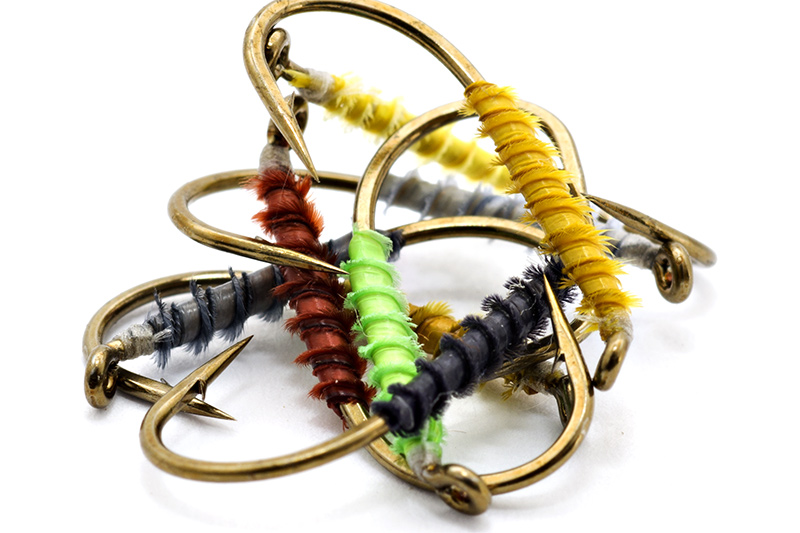
The most popular material for making bodies with nice segmentation is condor herl and condor biot. Due to the fact that these predator birds are protected, feathers from them are rare and difficult to find. For this reason , on the market you can find substitutes from different birds like: turkey, duck and goose. Pelican, heron, parrots and swan herls and biots are very rare and almost impossible to find and if you find them are not cheap at all.
Lets talk about the structure and parts of a primary feather (those from wing). As you can see in the photo bellow (a segment of feather), the feather has a central stem, biots on a side and herl on opposite side.
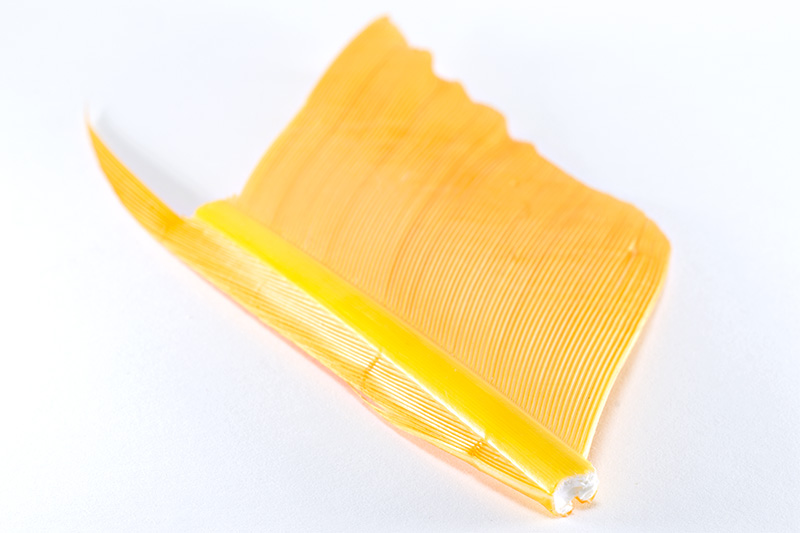
The barbs situated in the front part of the feathers are called biots. These barbs are positioned in angle compared with the stem. The biots are more wider and stronger and generally shorter compared other type of barbs.
Biots are perfect for making medium and short bodies and for tailing (stone flies for example)
On the opposite part of the stem you will find long and more delicate fibers. These are called: herls. These barbs are perfect for making bodies.
The good part of the barb is the zone between those 2 black arrows. The rest of it is good for fixing with thread:
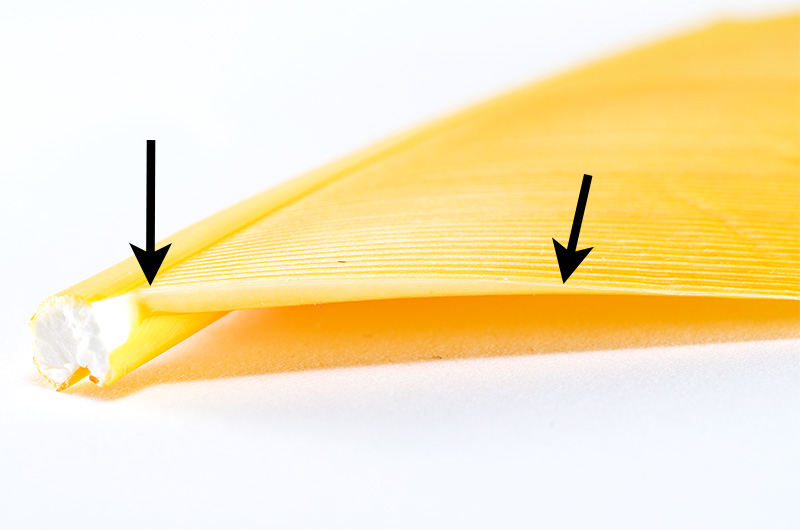
The difference between herl and biot is in how long you can make the body of fly:
*long, medium and short bodies – use herl
*short to medium bodies – use biot
So herl will cover all types of bodies. What you can do better with biots: tails for stone flies, due to special triangular shape.
With both you can make nice segmented bodies due to special structure and transparency and the final color is very interesting with shades and gradient tones.
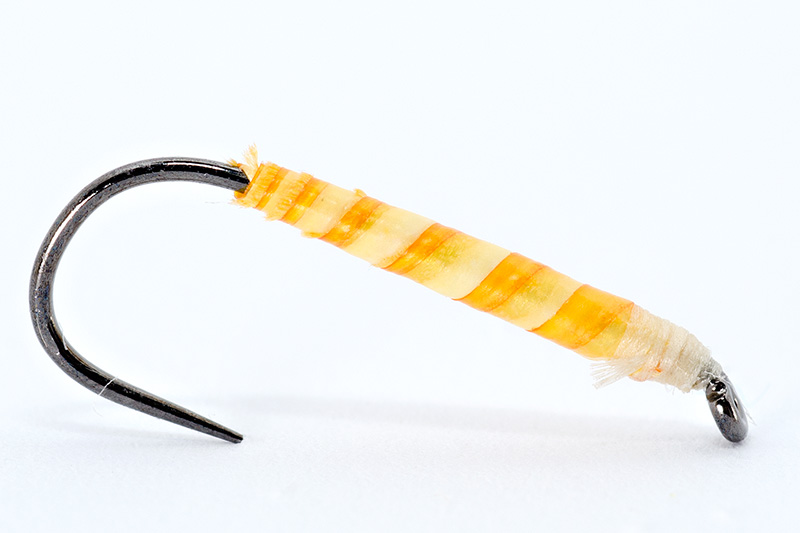
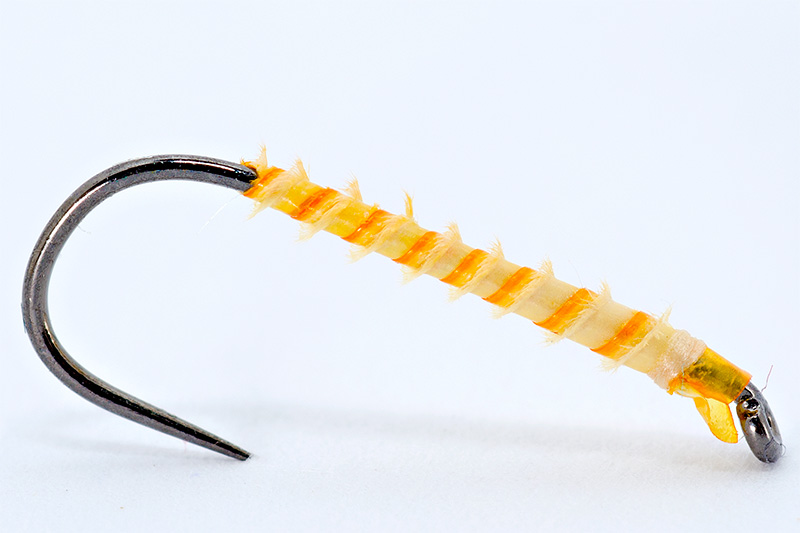
About tying with this material:
-when you strip the barb from the stem of the feather you will notice that the structure is not symmetrical. The base is transparent and the upper part is more opaque. Also you’ll see a small gap at the base . This gap is a reference for us in tying process.
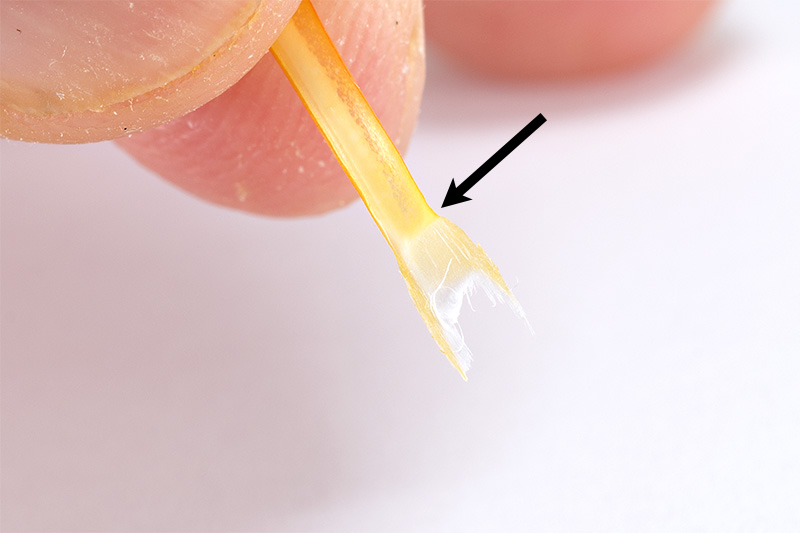
The opposite part of the gap is not so transparent and in section has a “T” shape. The barb has a small fin/burr. This fin will provide you a very nice segmentation and you can see it in the photo bellow between arrows:
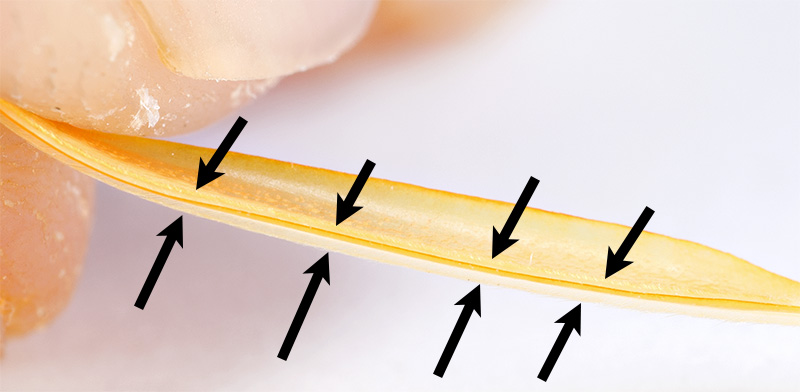
Now here is a body made with a biot with the gap fixed down. At the first turn the gap will be orientated up.
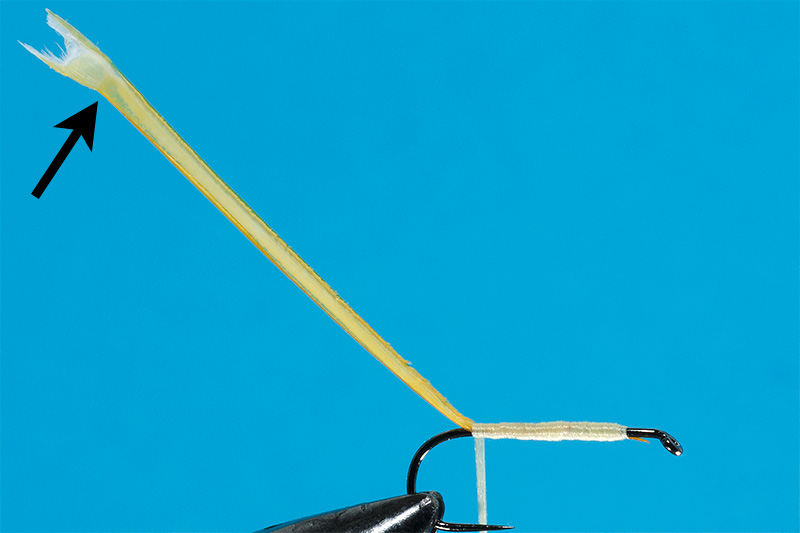
The result looks like:
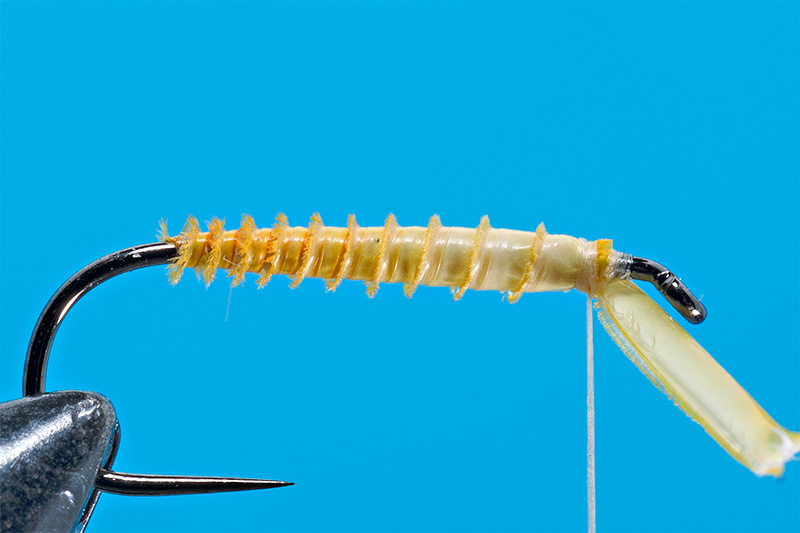
If you fix in the opposite way, the result will be:

A few bodies with herls:
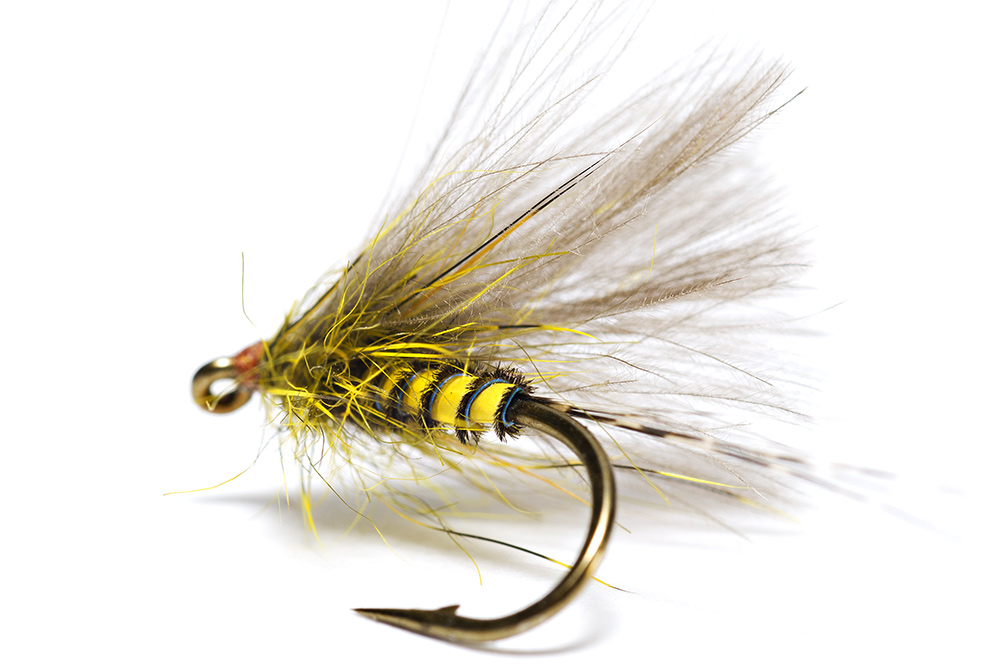
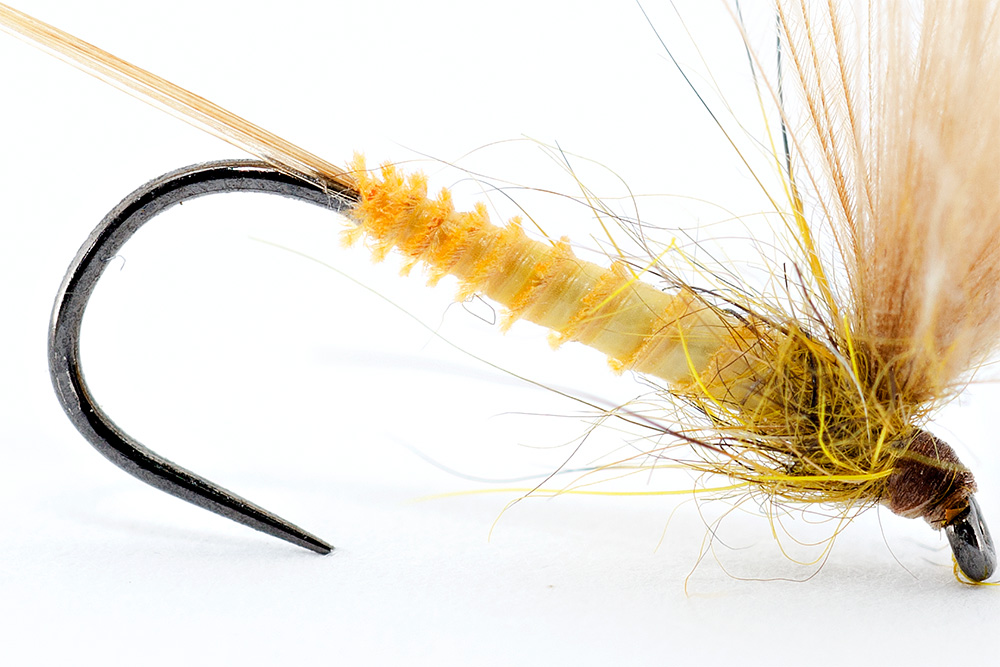
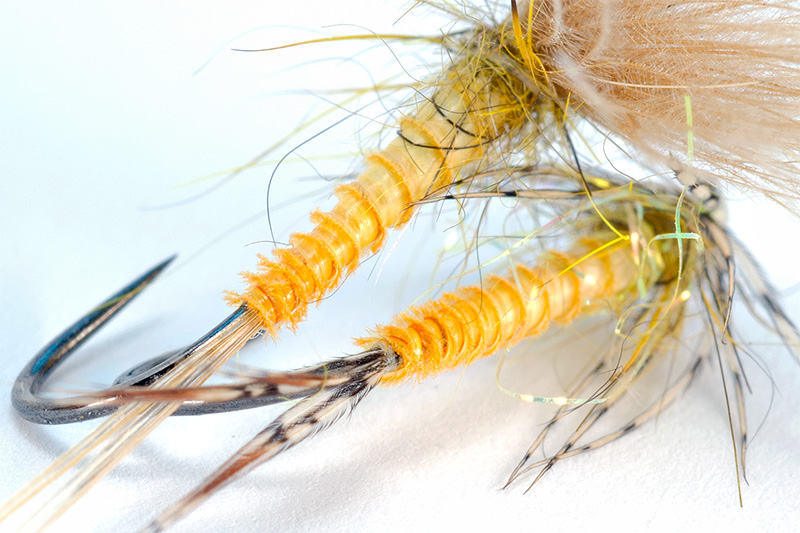
I hope you find the article interesting and stimulating 🙂
cheers
Lucian

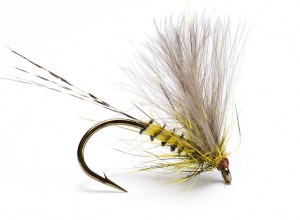
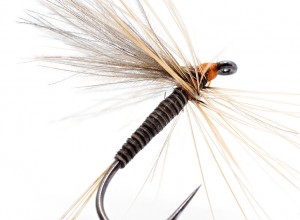
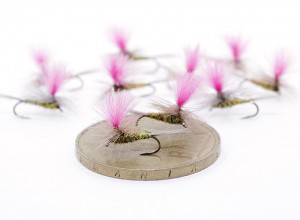
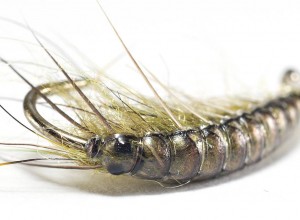
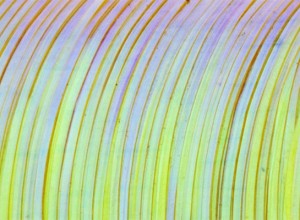
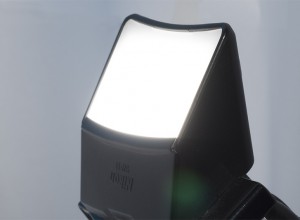
November 24, 2016
Great article with lots of info and easily understood by a relative novice to fly dressing like myself , much appreciated !
March 25, 2018
Amazingly useful and well-written article. Thank you, Lucian!
March 28, 2018
Thanks David, very kind of you 🙂
April 9, 2021
Excellent article!
May 13, 2023
Widely used in France for trout fly bodies, in particular condor herl substitute is excellent for mayfly(E. danica) bodies, grey, olive. Translucence can also be very effective here.
May 14, 2023
Hi Mike,
I know, the French are very passionate about using this material. Honestly, I also like it because it offers a lot of advantages: cheap, easy to use and can be colored in a multitude of colors. It can be used for all types of flies: wet, dry and nymphs.